I am designing a common emitter amplifier for educational purposes. I work in a different engineering field so please bear with me.
The gain of the circuit is around 26 (enough for my purpose), but it has a distortion (measured in LTspice) of 2.9% for a 50mV input signal.
I have looked everywhere, but I could not find an answer. Is it possible to reduce the distortion of a common emitter modifying this configuration?
I have tried several things:
- Increase voltage (Vcc). After re-biasing, the gain goes up, but so does the distortion
- Changing the emitter amount of bypass (RE1 and RE2) to different ratios. Same thing
- Replace the collector resistance with a current source. I was not able to bias the circuit
- Replace the emitter load with a current mirror. I can bias the circuit, but unless I add an emitter resistor and a bypass capacitor before the current mirror there is no change.
With regards to the last 2 attempts, this is my (very limited) understanding. One of the reasons we have distortion is the fact that the gain is not constant because of the contribution of \$r_e\$ that depends on the current through the transistor. So a way to reduce the variability is to use either a current source or a current mirror. However, looking at the load line on the transistor curves, wouldn't this cause a reduction in the voltage swing and consequently gain?
- Add a buffer. This seems to be going somewhere. The gain goes up a bit and the THD is halved to 1.5%. Although I do not really understand why.
Of course all the above is valid for a small input signal of 50mV. If I increase the signal to what I would like to use (500mV to amplify the output of an iPhone) the distortion increases considerably. My understanding here is that due to the non linearity of the BJT, the higher the swing the higher the effect of non-linearity and the only way to compensate for this is to use some form of correction (negative feedback, differential amplifiers?).
I am clearly missing something.
I know that there are better configurations, but I am doing this for educational purposes and not to build a professional amplifier. My main goal is to learn and understand and having fun doing it.
